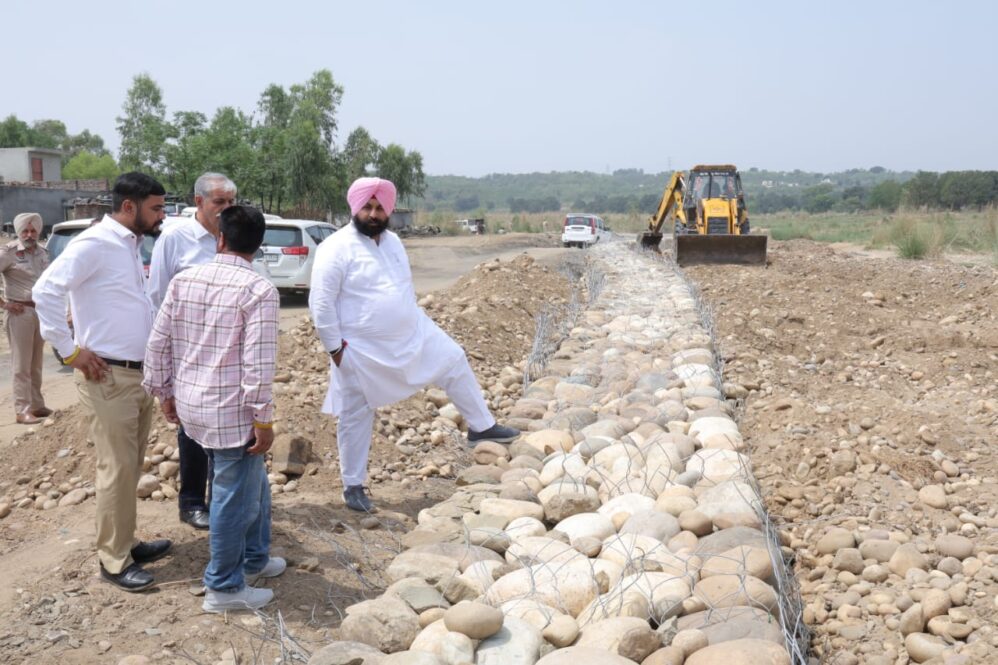Nangal, May 5 : During the monsoon season, flash floods and the release of excess water from the Bhakra Dam, along with heavy rainfall in Himachal Pradesh, often caused significant damage to fertile lands and houses along the banks of the Swarn and Sutlej rivers in this area. However, the government has now made strong arrangements to protect the lives and property of the people by constructing embankments and flood control structures.
This information was shared by S. Harjot Singh Bains, Cabinet Minister for Higher Education, School Education, Technical Education, Industrial Training, Language and Information & Public Relations, Punjab, during an inspection of the completed work on embankments and flood control structures on the Swarn river in Bhangla, which cost ₹48 lakh. He mentioned that when flash floods occur in the Swarn river, they damage people’s lands, crops, and homes. Last year, during the monsoon season, a ground-level survey was conducted in the affected areas. Based on that survey, the government provided funds to strengthen the embankments and install strong flood control structures.
The area from Mahindpur to Bhangla, which was severely impacted by flash floods from the Swarn river and excess water from the Bhakra Dam due to heavy rainfall in Himachal Pradesh, has now been protected. He explained that with the installation of 700 meters of embankments and flood control structures at a cost of ₹48 lakh, the area, along with houses, fields, and livestock, will remain safe during flash floods. Additionally, further strengthening of the embankments along the Sutlej and Swarn rivers is also underway. The government has prioritized the safety of people’s lives and property.
On this occasion, Dr. Sanjeev Gautam, Chairman of Guru Ravidas Ayurvedic University, Jaswinder Singh Bhangla, Sarpanch, Gurnam Singh, Happy Saini, Jai Pal, Deveraj Bhatia, Husan Chand, Ashok, and Patwante were also present.
Summary:
Harjot Bains highlights steps to safeguard agricultural lands and homes from floods, including infrastructure strengthening, improved irrigation, and community engagement for flood preparedness.


